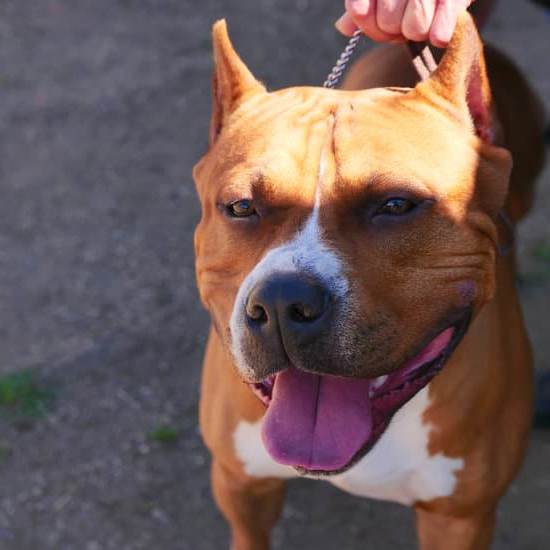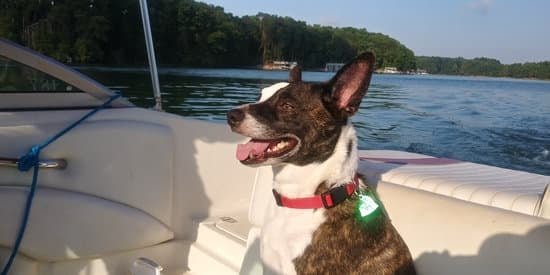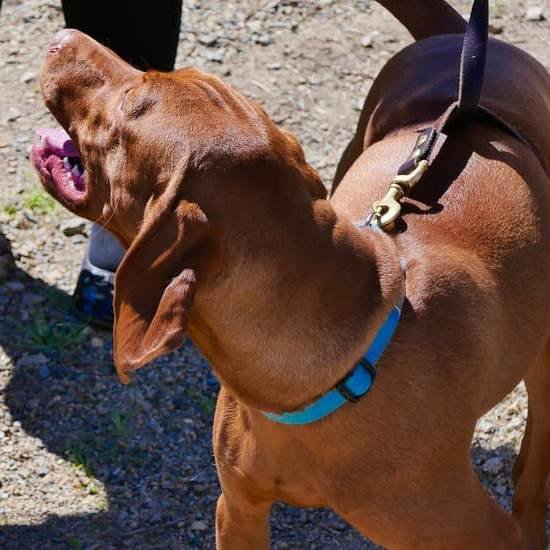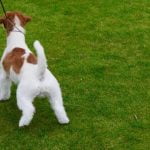Are you struggling with your dog’s destructive chewing behavior? Learning how to train a dog not to chew everything is essential for the well-being of both your furry friend and your belongings. Understanding the reasons behind a dog’s natural instinct to chew and how it can lead to destructive behavior is the first step in addressing this issue effectively.
One important factor to consider is that puppies, just like human babies, go through a teething phase which greatly influences their chewing habits. Providing appropriate chew toys as an alternative to inappropriate items is crucial during this phase. Positive reinforcement training and consistency in training are also essential in redirecting a dog’s chewing behavior towards acceptable objects and communicating what is and isn’t allowed.
In this article, we will explore the various reasons why dogs chew, including the influence of puppy teething, as well as provide practical tips for managing the environment and seeking professional help if necessary. With patience and perseverance, you can successfully train your dog not to chew everything, creating a harmonious living environment for both you and your beloved pet.
Puppy Teething and Chewing
Puppy teething is a natural and necessary process that can have a significant impact on a dog’s chewing habits. Understanding this stage of a puppy’s development is crucial for dog owners looking to train their pets not to chew everything in sight.
During the teething process, which typically occurs between 3 and 6 months of age, puppies will experience discomfort and pain as their baby teeth are replaced by adult teeth. This discomfort often leads them to seek relief through chewing on various objects.
Understanding the Teething Process
During this stage, puppies may exhibit an increase in chewing behavior as they attempt to alleviate the discomfort caused by their emerging adult teeth. It is important for dog owners to recognize that the urge to chew during teething is natural and not necessarily indicative of destructive behavior. By understanding the physical processes taking place in their puppy’s mouth, owners can approach the issue with patience and empathy.
Managing Teething-Related Chewing
To prevent a puppy from developing destructive chewing habits during the teething phase, it is essential to provide appropriate outlets for their need to chew. This can be achieved by offering a variety of safe and durable chew toys specifically designed for teething puppies.
Additionally, frozen toys or washcloths can provide soothing relief for aching gums. By providing suitable items for chewing and redirecting the puppy’s attention away from inappropriate objects, owners can effectively manage their pet’s chewing behavior during this developmental stage.
Overall, understanding a puppy’s teething process is fundamental when learning how to train a dog not to chew everything. By recognizing the natural instincts driving their behavior and providing appropriate outlets for chewing, owners can successfully navigate this challenging stage in their pet’s development while promoting positive chewing habits for the future.
Providing Appropriate Chew Toys
When it comes to training a dog not to chew everything in sight, providing appropriate chew toys is crucial. Understanding the natural instinct of dogs to chew and providing them with suitable outlets for this behavior can significantly reduce destructive chewing habits. Dogs chew for various reasons, including teething, anxiety, boredom, and lack of proper stimulation. By offering them suitable chew toys, owners can redirect their chewing behavior and prevent damage to household items.
It’s important to choose chew toys that are safe and durable for dogs. There are various types of chew toys available in the market, including rubber toys, nylon bones, and dental chews.
It’s essential to consider the size and strength of the dog when selecting a chew toy to ensure that it is appropriate for their breed and size. Additionally, rotating the toys can help keep the dog interested and engaged, preventing them from getting bored and turning to other objects for chewing.
Positive reinforcement training is also essential when introducing chew toys to a dog. Encouraging them to play with their toys by offering treats or praise when they engage with the toy can help reinforce this behavior. Consistency is key in this process – consistently offering appropriate chew toys and redirecting the dog’s attention away from inappropriate items will help establish good chewing habits.
In addition to providing suitable chew toys, managing the environment is important in preventing unwanted chewing behavior. Keeping household items that are off-limits out of reach and using deterrent sprays or bitter-tasting products on furniture or cords can discourage dogs from chewing on them.
| Aspect | Description |
|---|---|
| Types of Chew Toys | Rubber toys, nylon bones, dental chews |
| Positive Reinforcement Training | Encouraging play with treats or praise |
| Managing Environment | Keeping off-limits items out of reach |
Positive Reinforcement Training
Using Treats and Praise
One way to implement positive reinforcement training for chewing behavior is by offering your dog tempting treats or verbal praise when they chew on their toys instead of household items. Whenever you catch your dog chewing on an approved toy, be sure to immediately reward them with a tasty treat or shower them with enthusiastic praise.
This creates a positive association between the act of chewing on the correct items and receiving a reward, making it more likely that they will continue this behavior in the future.
Redirecting Attention
Another aspect of positive reinforcement for training a dog not to chew everything is redirecting their attention when you catch them engaging in inappropriate chewing. For example, if you find your dog attempting to gnaw on furniture legs or shoes, gently take the item away from them and then replace it with one of their designated chew toys.
Encourage them to focus their energy and attention on the toy by engaging in play together or offering verbal praise when they interact with it.
Consistency Is Key
It’s essential to be consistent in applying positive reinforcement training methods for chewing behavior. Ensure that everyone in the household follows the same approach and uses consistent cues and rewards during training sessions. Over time, your dog will learn that good behavior leads to positive outcomes, ultimately helping them understand how to train a dog not to chew everything effectively through positivity and encouragement.
Consistency in Training
One of the key ways to maintain consistency in training is through positive reinforcement. This involves rewarding good behavior with treats, praise, or playtime. When a dog is caught chewing an appropriate toy instead of furniture or shoes, it’s crucial to immediately acknowledge and reward this positive behavior. By consistently reinforcing the desired behavior, the dog will begin to understand what is expected of them.
In addition to positive reinforcement, another aspect of consistency in training is setting clear boundaries and sticking to them. This means removing access to items that should not be chewed and redirecting the dog’s attention towards appropriate toys whenever necessary. Consistently applying these strategies will help the dog understand what they can and cannot chew, ultimately leading to improved behavior and less damage around the home.
| Examples | Benefits |
|---|---|
| Rewarding the dog with treats when they choose an appropriate toy over household items | Reinforces positive behavior and encourages the dog to continue making the right choices. |
| Removing access to inappropriate items such as shoes or furniture | Sends a clear message that these items are off-limits for chewing. |
Managing the Environment
Training a dog not to chew everything involves more than just teaching them what they can and cannot chew. It also involves managing their environment to reduce the temptation to chew on inappropriate items. Here are some tips on how to manage the dog’s environment effectively:
- Keep valuable or dangerous items out of reach: Store shoes, clothing, remote controls, and other tempting objects in closets or high shelves where the dog can’t access them.
- Use baby gates or barriers: Restrict the dog’s access to certain rooms or areas of the house where they may be more likely to find items to chew on.
- Clear the floor: Pick up any small objects or potential choking hazards that could tempt your dog to chew on them.
In addition, consider providing your dog with their own designated space and items for chewing. This includes having a designated area for their bed and toys. By managing the environment in this way, you can help eliminate opportunities for your dog to get into trouble with inappropriate chewing.
It is important to remember that managing the environment is only one part of training a dog not to chew everything. Consistency in training and providing appropriate chew toys are also crucial aspects of addressing this behavior. By combining these strategies, you can help set your dog up for success in learning what is and isn’t acceptable to chew.
Seeking Professional Help
Training a dog not to chew everything can be a challenging task, especially if the behavior persists despite efforts to redirect it. In some cases, seeking the advice of a professional dog trainer or behaviorist may be necessary to address the underlying reasons for the chewing behavior and develop a comprehensive plan for behavior modification. Here are some reasons why seeking professional help can be beneficial:
- Expertise: Professional dog trainers and behaviorists have extensive knowledge and experience in understanding canine behavior. They can assess the specific factors contributing to your dog’s chewing habits and tailor a training program to address them.
- Customized approach: A professional will create a personalized training plan based on your dog’s age, breed, temperament, and individual needs. This tailored approach can be more effective in addressing the root cause of the chewing behavior.
- Behavior modification techniques: Trainers and behaviorists are skilled in using various behavior modification techniques such as desensitization, counter-conditioning, and positive reinforcement to effectively change your dog’s chewing habits.
If you find that despite consistent efforts, your dog continues to exhibit destructive chewing behaviors, it may be time to seek professional guidance. A qualified trainer or behaviorist can provide valuable insights and practical strategies on how to train a dog not to chew everything. Remember that every dog is unique, so seeking professional help is an investment in creating a harmonious relationship between you and your canine companion.
Patience and Perseverance
In conclusion, training a dog not to chew everything requires patience and perseverance. With a thorough understanding of the reasons behind a dog’s chewing behavior, owners can effectively address the issue by providing appropriate chew toys, using positive reinforcement training, and maintaining consistency in their approach. It’s important to recognize that puppies go through a teething process that influences their chewing habits, so being understanding and patient during this phase is crucial.
Additionally, managing the environment by minimizing the dog’s access to items they shouldn’t chew can significantly aid in the training process. Seeking professional help from a dog trainer or behaviorist may also be necessary if the chewing behavior persists despite efforts to train the dog. By staying patient and persevering through this process, owners can ultimately teach their dogs what is and isn’t allowed when it comes to chewing.
In essence, while it may take time and effort to train a dog not to chew everything, it is certainly achievable with the right approach. By consistently implementing positive reinforcement techniques and providing appropriate outlets for chewing, coupled with patience and perseverance, owners can effectively redirect their dog’s natural instinct to chew towards acceptable objects. Understanding the importance of these aspects is key in successfully addressing this common behavioral issue among dogs.
Frequently Asked Questions
At What Age Do Dogs Stop Chewing Everything?
Dogs typically stop chewing everything excessively between the ages of 6 to 9 months. This is when they have finished teething, and their urge to chew decreases. However, it varies among individual dogs.
How Do I Get My Dog to Stop Chewing and Destroying Everything?
To get your dog to stop chewing and destroying everything, provide plenty of appropriate chew toys for them to redirect their chewing behavior. You can also use deterrent sprays on items you don’t want them to chew and supervise them closely.
How Do You Discipline a Dog That Chews?
Discipline a dog that chews by using positive reinforcement for good behavior and redirection for bad behavior. Avoid punishment as it can create fear or anxiety in your dog, which may lead to more destructive behaviors.

Welcome to the blog! I am a professional dog trainer and have been working with dogs for many years. In this blog, I will be discussing various topics related to dog training, including tips, tricks, and advice. I hope you find this information helpful and informative. Thanks for reading!





